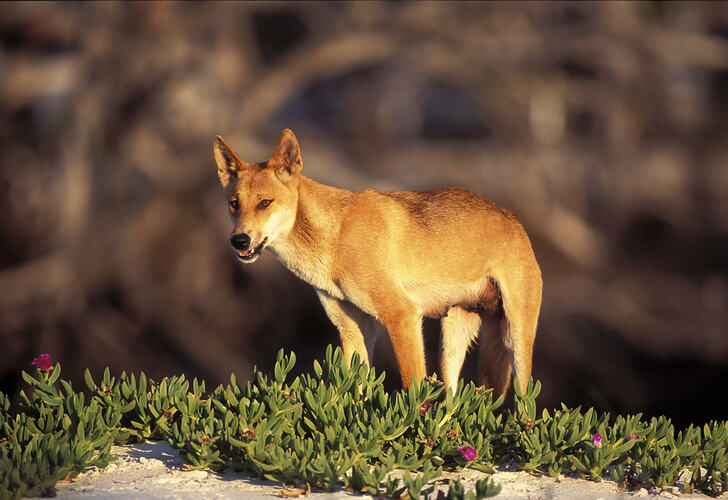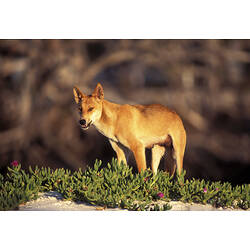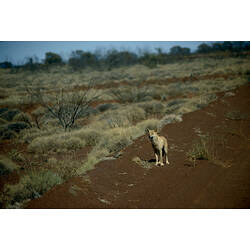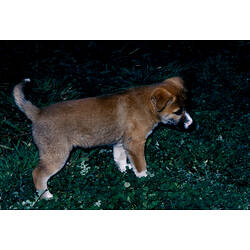General Description
Body fur colour varies, but usually red or sandy. Difficult to distinguish from some breeds of domestic dog. Body up to 74 cm; tail up to 45 cm.
Biology
Dingos are a form of domesticated dog that were introduced to Australia multiple times over the past ~4,000 years, probably by Asian seafarers. Like all dogs they are descended from the Grey Wolf, Canis lupus. The population of Dingoes is controlled by over 9,000 km of fencing across three mainland states of Australia. Although introduced, Dingoes have become part of the Australian landscape and may limit the impacts of introduced foxes and cats in some parts of Australia.
Distribution
Mainland Australia but excluded from large areas of the southeast and southwest.
Habitat
Most areas apart from urban places.
More Information
-
Animal Type
-
Animal SubType
-
Brief Id
Howls, thick tail, ears often held upright.
-
Colours
Orange
-
Habitats
Wetland, Urban, DryForest, WetForest, Woodland, Mallee, Grassland
-
Where To Look
-
When Active
Nocturnal, Diurnal
-
Diet
Carnivore
-
Diet Categories
Mammals, Reptiles, Arthropods
-
Endemicity
-
Conservation Statuses
CITES: Not listed, FFG Threatened List: Vulnerable, EPBC Act 1999: Not listed, IUCN Red List: Not listed
-
Taxon Name
-
Common Name
Dingo
-
Kingdom
-
Phylum
-
Subphylum
-
Class
-
Order
-
Suborder
-
Family
-
Genus
-
Species Name
lupus
-
Subspecies
dingo




